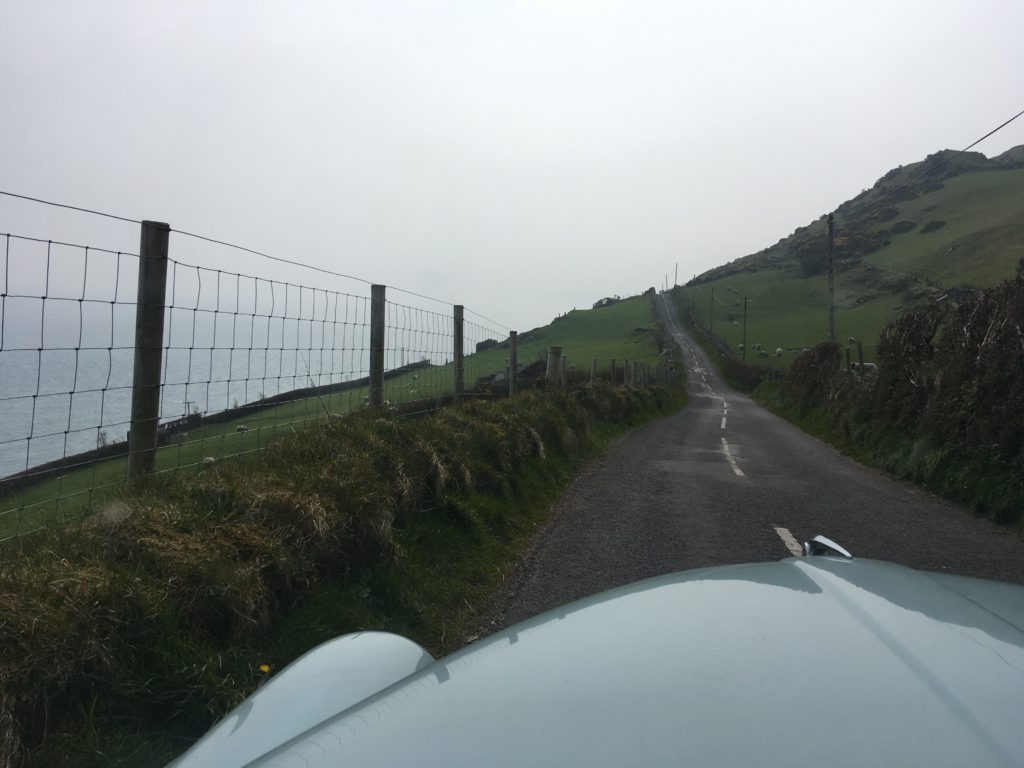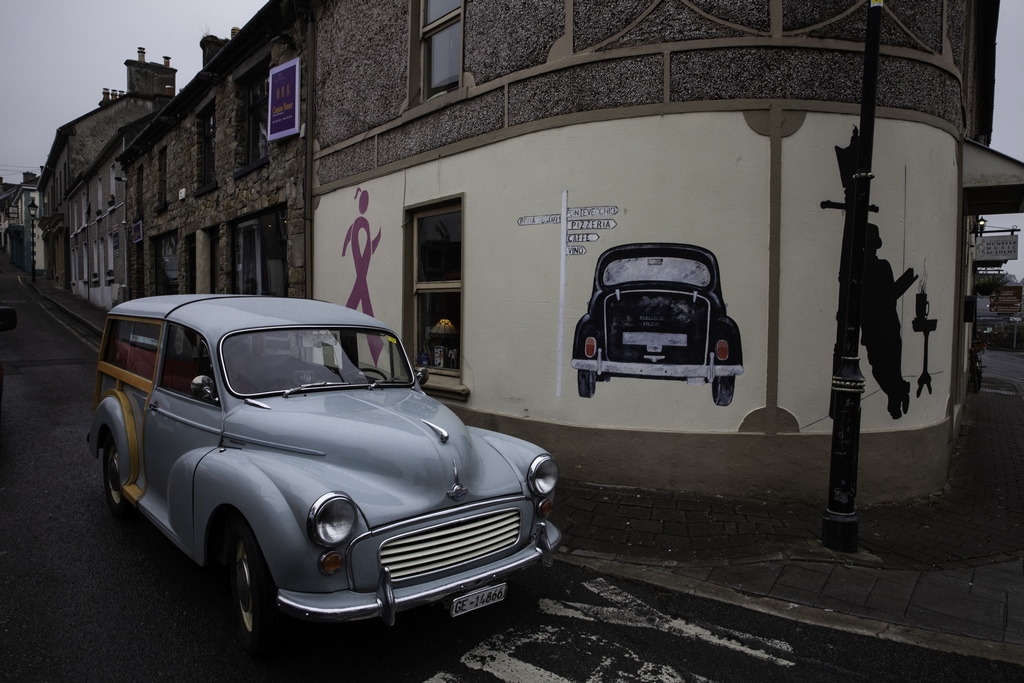France to Islay by Morris Traveller: Ireland
April 6 – 19, 2019
April 6, 2019 Cork to Dingle
.
When travelling by ferry boat with Brittany Ferries, it is best not to try to go back to the car until the very last minute. That way you avoid a long hot wait on the staircase with other travellers who wish that they too had not tried to rejoin their car until the last minute. By the time we were out of the ferry all we wanted to do was arrive at our evening’s destination in Dingle, so we did not visit Cork but went straight on to the N22 and did not stop until we reached Killarney. In the centre of this touristic little town we hunted out a map of Ireland. Not an easy thing to do, all the shops are either pubs or cafés or sell sweets or woollen sweaters.
In order to feel we had enjoyed ourselves in Killarney we visited Ross Castle. The castle has been so many things over the ages and now is just a grey fortress with no character. It is wonderfully situated though, on the edge of the lough in Killarney national park.
We stopped at a garage to check Lady Pamela’s tyres and oil and fill up with petrol, then it was on to Dingle where, at wonderful Inch Beach we took Lady P on to the sand to celebrate her trouible free arrival at the Atlantic ocean.
Arriving in Dingle at Dunlin House we were greeted by Pat and given a cup of tea. He did not chat long as the Grand National race was starting and he did not want to miss it. We went to our rooms and watched it too. Horse racing is a big tradition in Ireland and Pat told us that one of the jockeys in the race was a local lad, Paddy Kennedy on Magic of Light, and he came in second. The winner, Tiger Roll, was the same winner as in 2018. The last time that the same horse won two years in a row was in the 70’s when Red Rum won, and I think that was the last time I had watched a Grand National!
We walked into Dingle Town and went into the first pub that was playing music: The Dingle Pub, we drank Guinness, as good as ever. Here it is important to drink, food comes a poor second.
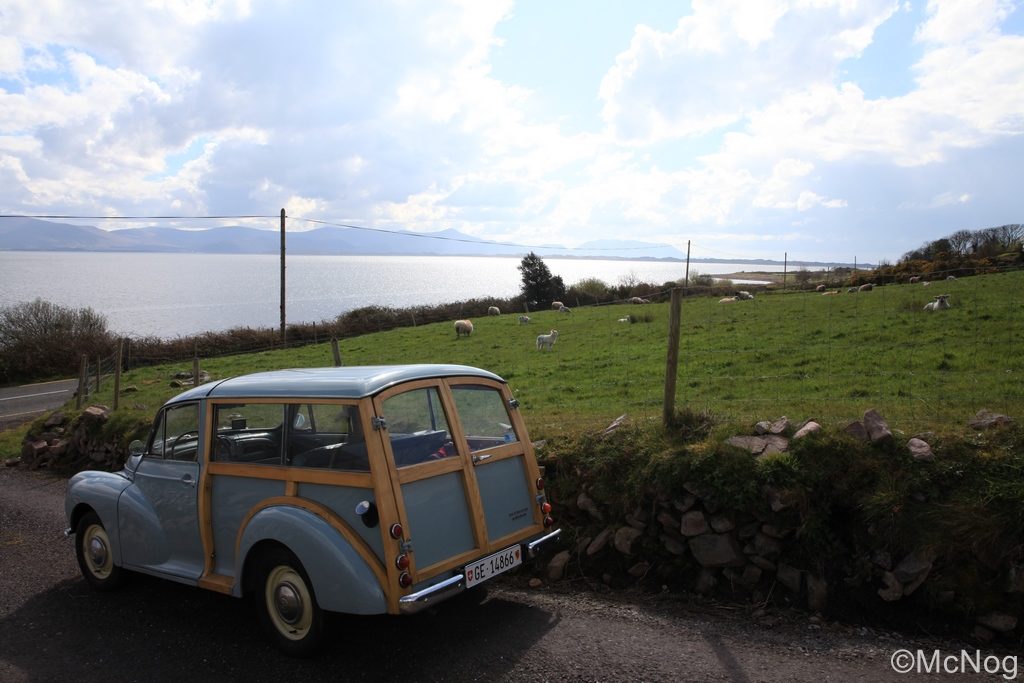
April 7, 2019 Dingle
.
.Slea Road drive, the Wild Atlantic Way, in Lady Pamela. The sky was blue as blue as we pulled in at Coumeenoole Beach where I had swum when we came on holiday here as a family in the 1970’s. In a changing world, it had remained almost exactly the same. We took off our shoes and socks and walked in the waves. Later we walked along Dunmore Head; there were wheatears fresh in from Africa, ravens and meadow pipits and, out on the ocean, gannets, that most majestic of sea birds. Next stop was Clogher Head where we used to camp, with the three sisters mountains in the distance and the Blasket Islands out to sea, unchanged.
We were the only visitors to the Gallarus Oratory, a stone church built in the 11-12th century and in perfect condition. The enthusiastic young man at the reception explained that the Oratory or small chapel is the only complete example of its kind left in Ireland. We looked over it with respect for the design and build. I found out later from my sister that I had visited the chapel over 40 years ago and had not been very impressed. Obviously age has brought some wisdom then!
Looking for somewhere for a drink and a snack, we discovered Tigh TP, a pub by the sea at Ballydavid. We sat outside in the sun with a shandy, looking across the bay in the mild silvery light of late afternoon. Some loud locals joined us and were enthusiastic about Lady Pamela – she had been photographed twice already that day.
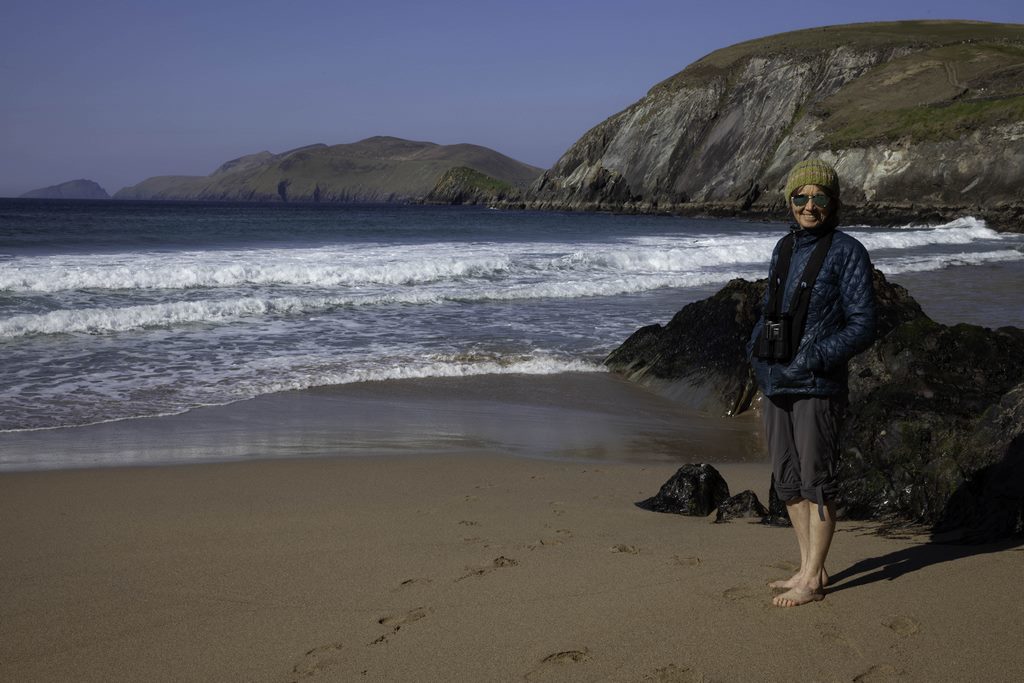
April 8, 2019 Dingle
.
Our B&B man, Pat, ex teacher of history in Dingle, wrote a book and it sold about 1,000 copies. It is called ‘The Knave of Trumps’ and it tells the life story of James Rice and his failed attempt to bring Marie Antoinette to Dingle. I rather liked the idea of writing a book about a failed attempt, so I bought a copy.
Following Pat’s advice we went to see the tower overlooking Dingle, Leask Tower. In Ireland there do not seem to be any public rights of way and land is owned by local farmers who do not allow it to be crossed. The farmer who owns the land where Leask Tower is situated is apparently an exception and for 2 Euro per person he is happy to allow anyone to go up there! As I only had a 50 Euro note I went in to see the farmer’s wife, she was only too pleased to give me change and she came out to see the car and wish us a good walk. Her old collie sat in front of the farm waiting to be stroked by passing tourists. The walk up to the tower was steep but short. We had it to ourselves, with just a rather strong wind for company. Although not sunny the sky was clear and we had good views all around. We ate Dingle soda bread and cheese crouched by the tower as the wind swept around it. On our way down we passed about ten people going up. We began to reflect a little on the profits the farmer is making. Over 20 EURO in a couple of hours on a Monday in April! With the tower listed as a key site in the town and with enthusiastic write ups on trip advisor, the farmer and his wife must be raking it in! It hardly seems fair, we prefer Scotland with the ‘right to roam’ and the ‘tourism pedestre’ of Switzerland or public footpaths of England that allow ordinary people access to the countryside.
Walking around the modern harbour of Dingle, fishermen were loading ice into trays to keep the fish fresh. A lone black guillemot was fishing there. We ate ice-cream at the famous Murphy’s ice cream shop. Balsamic apple, strawberry and Dingle sea salt.
The Irish are very friendly. While walking in the street an old man admired my hat. ‘It is from Chile’ I said. ‘Yes it is rather today isn’t it?’ he replied. We laughed and walked off, both of us wondering if he had intended to make a joke or not.
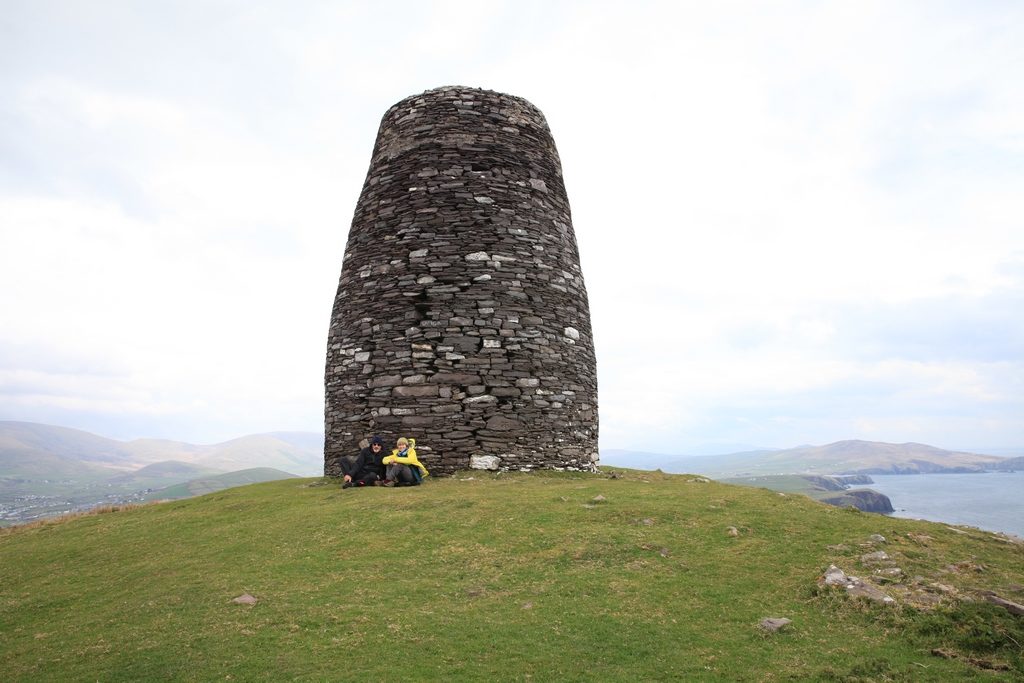
April 9 Dingle to Coolbaun, Kilbarron Quay, Lough Derg
.
Marc drove Lady Pamela over the Connor Pass, low cloud obscured the view from the top but on the impressive descent we were able to see over the moors and hills to the sea beyond. We drove to Tralee and then on to Listowel, Tarbert, Foynes under a steel grey sky, getting darker as we headed north until finally as we drove into Killaloe behind a big lorry, it began to rain. We had a coffee at a small cafe behind the Super U supermarket. In many small towns the SuperU is now joined by Aldi – such is the way of the world. There are many small cafés, very cosy places, full of books to read. Marc was soon into a National Geographic of the 100 most beautiful places in the world. Lough Derg was not there, but he was pleased to see that ‘the Swiss Alps’ were in, with no more detail than that!
Outside the supermarket rooks and jackdaws were fighting over left over food in a foil wrapping. It is interesting that in France and Ireland, rooks, not carrion crows are the usual ‘black bird’ seen in flocks in fields. Most of the towns hold jackdaws which are quite rare in Switzerland. When we do see crows here they are hooded crows, such as we find in Scotland. In England the crows are carrion crows, as in Switzerland, but in England too, rooks and jackdaws are more common. Ah the wonderful intricacies of the bird world.
Killaloe looked more interesting than it had at first appeared as we crossed over the bridge, especially after we noticed noticed a black Morris graffiti on the wall of a café. Looking for a place for a picnic we found ourselves driving down a long narrow and winding road to Garry Kennedy Harbour. There was Lough Derg, its peat coloured waters unchanged since I last visited in the 1970’s. Two mute swans flew by and Marc fed a group of mallards some of our leftover bread. They found the french baguette, a week old, a bit hard to digest. A black headed gull flew over to see what was going on.
We drove on to Puckane and the old bar, Minehans where I used to spend my evenings with my family over 40 years ago. It is renamed McGraths and seemed to be closed. We peered in through the windows and in the back room I pictured our family sitting round the edges, listening to old Ned Brophy giving us a song, or Joan the land lady’s daughter singing ‘Nobody’s Child’. Sooner or later a small boy would dance a jig to a fast played fiddle. The landlady’s two other daughters were nuns, we met them once, they were happy to serve beer while they were over although none of the family drank alcohol at all!QWe had booked three nights in a ‘tiny home’, a small cabin built by Steven in his garden, overlooking Lough Derg. To reach it we drove past Kilbarron Quay where I used to stay as a child in our caravan and tent. We swam in the lough most days, fished from our small fibreglass boat, Toab, and spent our nights at Minehans. As we parked Lady Pamela in front of the quay a ray of sunshine lit up the lough and revealed its eery beauty. It was hard to imagine now that we camped at such a place, there are many more trees, and the road that runs just by the Quay is more busy as many houses have been built along the hillside. It was in the garden of one such house that we found our ‘tiny home’. Before getting installed we walked down to the nearby graveyard and abandoned church, then along the road and up a track to the big house with a turret, apparently owned by the ‘Starling’ family for generations. It was like going back in time. The fields of sheep and lambs, cows, horses. The hedgerows where two blackcaps were fighting out their territory, a robin was singing his shrill song and a tiny wren, near enough to touch, sang his heart out, his whole body in his voice. Song thrush and blackbird provided a background of soft notes.
We met Steven, he was born in a village not far from here and bought the land in the 1970’s. Twenty years later he built a house here and moved his family from London. He works as a carpenter, hence the ‘tiny home’.
Lady Pamela has behaved superbly. The only issue we have with her is the faulty petrol indicator which never shows empty. We have some spare fuel in the car, just in case.
The bluebells are in flower! This wonderful springtime bulb seems to be unique in the wild to the British Isles. There were many in flower on the roadsides in Dingle but they were all white. Marc called them Dinglebells! Around Lough Derg they are blue, with the occasional pink and purple. Primroses and cowslips are everywhere, and lesser celandine with its bright yellow flowers and shiny leaves.
Behind our tiny home a track has been filled with rubble, preventing access to the hill beyond. We asked Steven about it and he said a local farmer put down the rubble and also cut down a wood to build houses. ‘It is legal’ we asked. ‘No, Steven replied, but no-one will report him because he owns a lot of land around here and he would make life impossible for us’. What about the county council? we wondered, does no-one check these things? Local government here does not seem to have the power it has in Switzerland or even in France.
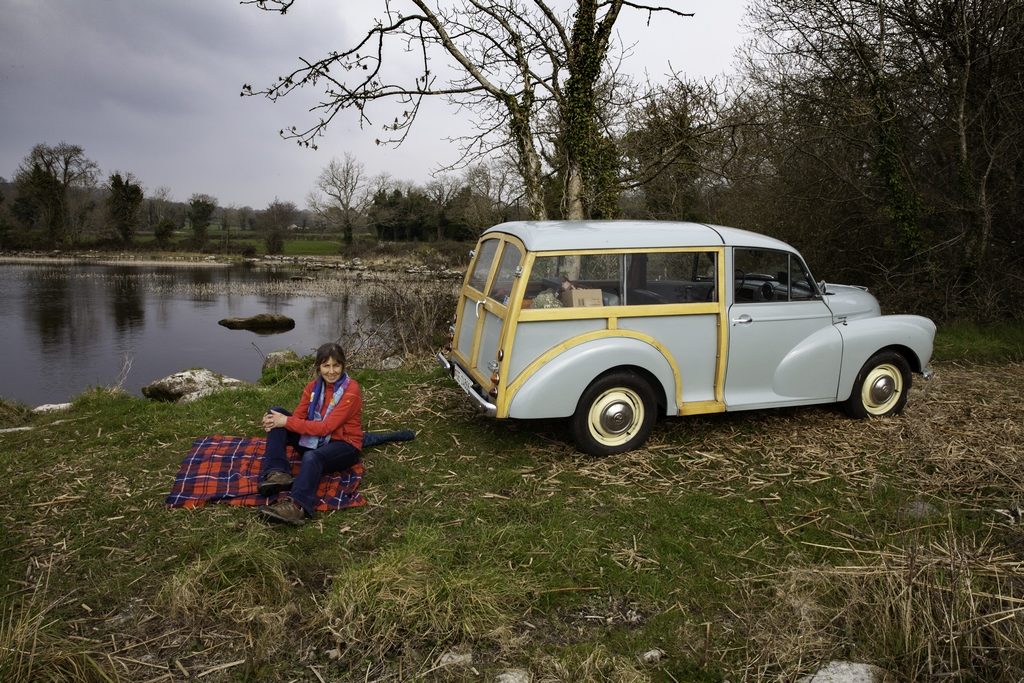
April 10, 2019 Lough Derg
.
We slept well in our tiny home! The bed is in the mezzanine and so is quite low, a mattress on the floor, we could see the moon from the window.
Steven had said that we could use his boat so we went to try it out. It is a fibre glass boat with a tiny open cabin in front, it was very dirty indeed and quite slippery underfoot from the water in the bottom and the green mould! We did out best to make it presentable with a dirty sock that was on board and a half plastic bottle for getting the water out.
Marc started the engine and then we were off on Lough Derg! We slowed the engine near ‘Goat Island’ which has apparently been made bigger so that Terns can nest there. It was full of black headed gulls, a few herring gulls, cormorants, swans and what looked like godwits but they flew off before we could be sure. It was a super trip even in a dirty boat with noisy engine. There was no-one else on the lough! Afterwards while picnicking at the little harbour where the boat was moored I saw lots of little fish, I used to love catching them in a net and it was great to see that they are still here.
Steven had told us that there was a nice walk up through some woods near his house. His house is up the hill about half a mile along from Kilbarron, and about a mile up from the lough. There is a beautiful view of the lake from the house. This area has about 20 big houses situated in their enormous grounds, each with a view of the lough and each in a different style. It is not in keeping with how things used to be, but then what is? The walk to the woods turned out to be really short and we had soon walked through them, so we walked on through an electric fence (I found that out when I tried to get over it, I got passed all the others on all fours!) and onto a field, that is when Marc spotted a castle! We decided to go and see it. I recognised it as a castle that I had visited in the 1970’s with my sister and father and it had been quite a challenge to reach it. Today was no different, we had to cross lots of electric fences and hedges and it was not long before Marc too received a nasty electric shock. Reaching an thorn hedge impossible to penetrate, we asked a man who was working in the garden of his house if there was another way to get to the castle and he said to go into the field next to his house where there were cows. ‘Won’t the farmer mind?’ we asked. ‘Oh no, John Foggerty won’t mind’ he said. We climbed three more gates and were followed through the field by the cows, then it was one more gate and a final squeeze through a hedge and we were there! What a castle it is! So old, still with the staircase and the arrow windows. This one certainly does not figure on any ‘heritage trail’ yet is surely should. I looked it up on the internet and the most information I could find is this:
Annagh Castle, Ireland
‘This 16th century castle was once owned by Sir Phillip Perceval, around 1630-40. He owned several other properties including Burton Manor, Dromdowney Castle and Liscarrol Castle. He burnt Dromdowney during the rising of 1641 to prevent it falling into the hands of the Irish Rebels. During the Irish Rebellion of 1641 he lost several of his houses and all his castles were taken, though Annagh and Liscarrol offered a stubborn resistance, the former holding out for eleven days against an attacking force of 7,500 men (August 20th until September 2nd 1642). His losses amounted to about 60,000 pounds. He was appointed Commissary-General of the Army and attended the Treaty in Kilkenny in 1643. He was offered a peerage but refused it and fell out of favor with the King and his lands were confiscated. He died in 1647 at the age of 44.
The ruins are located in Annagh townland on the shore of Lough Derg in County Tipperary, Ireland.’
We walked back, listening to bird song, especially wren and robin, the place is full of them! We ended the day with a cider on our little balcony.
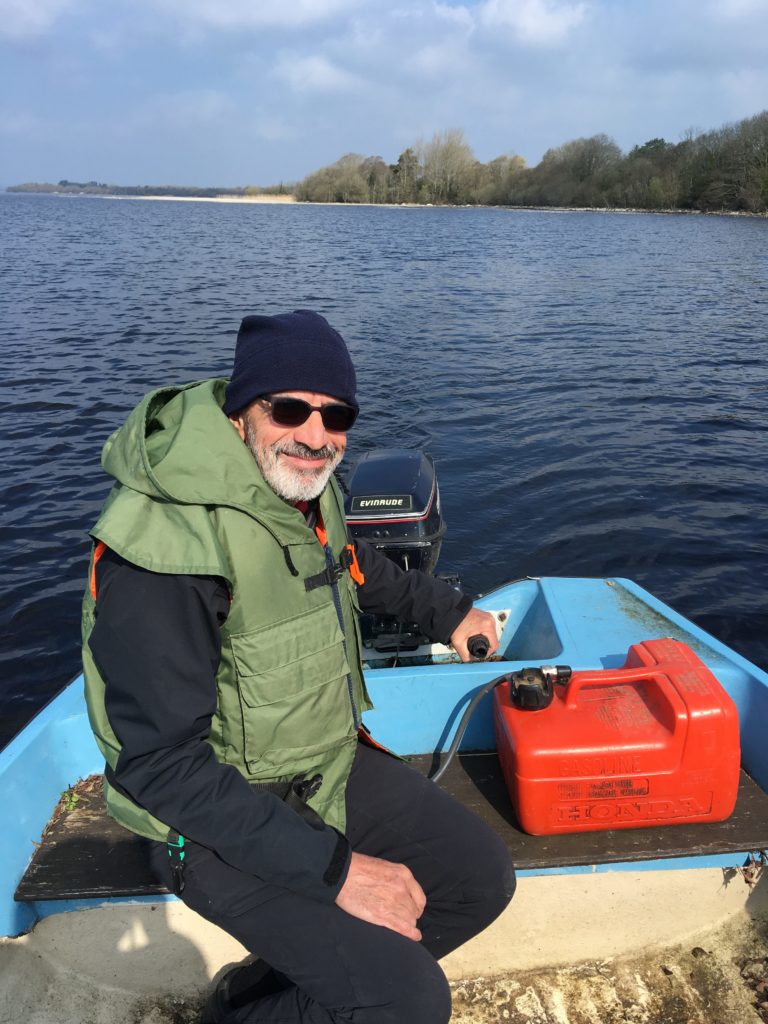
April 11, 2019 Lough Derg
.
Waking up to a grey cloudy morning we decided to go for a walk from Silvermines an old mining village near Nenagh. We drove straight up from the village with Lady Pamela in 2nd gear and parked at the top. A wide path took us between rows of fir trees that had apparently been donated by Americans. We could not help thinking that they might have used their money more wisely than in creating these rows of trees that looked like they had been planted to be cut down and then forgotten about. We left the path to walk along the ridge of the moor to the top of the silvermine mountain. There is no mountain top to speak of, but there are great views all around and down to the old mining centre below. I was far away in my dreams, thinking about Irish music and wondering if we would ever come across a pub where an old man is playing the fiddle while a young girl sings her heart out for the pure pleasure of it. I doubt it, but I can hope!!! We had a happy if rather cold picnic on the way back. We had bought some more soda bread at the shop in Silvermine. A highlight among the specialities of Ireland is their soda bread! Lovely and moist and tasty with a nice thick crust.
I had suggested visiting Dromineer on the way back and had visions of a cosy little pub for a drink and a village shop for supplies. When we drew up and parked at the marina it all came back to me. There is nothing of interest here at all! Forty years ago we had motored to Dromineer in our small boat, it had taken ages and we had experienced the same sense of disapointment on arriving.
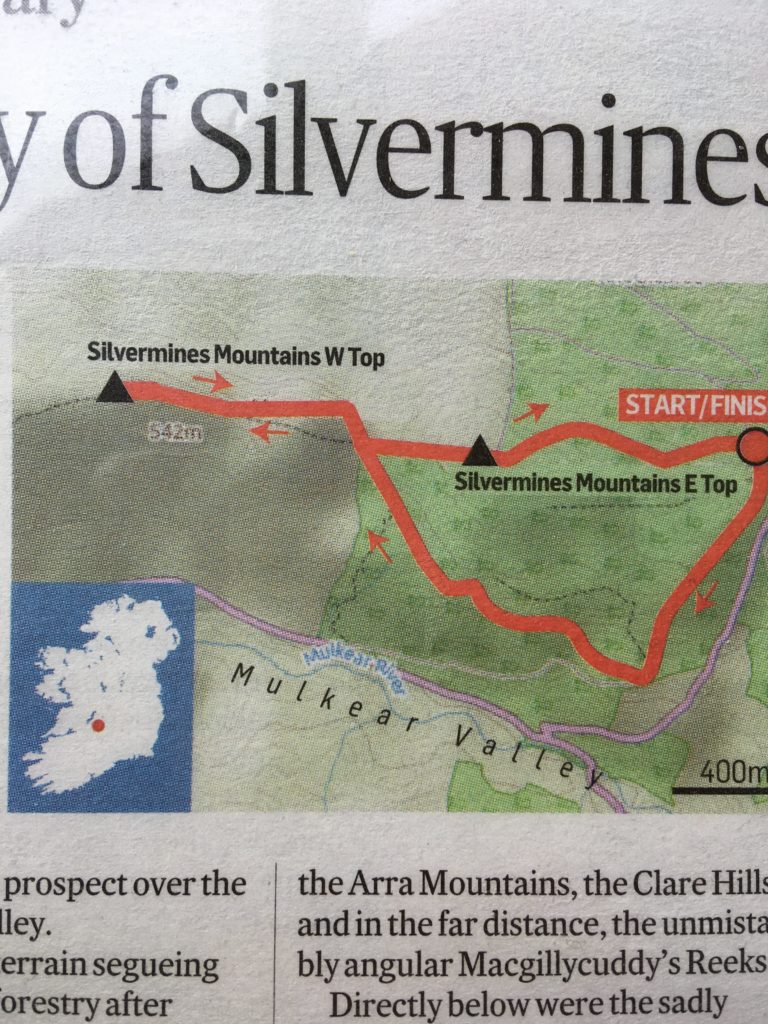
April 12 Coolbaun, Kilbarron to Bealadangan, Connemara
.
On the road agan Lady Pamela motored along wide and empty roads, only meeting traffic in Galway. We stopped at Ceibh Bhaile na hAbhann, a ‘viewpoint’ on the Wild Atlantic Way. The place is not as impressive as its name. We had a windy picnic there with the sun shining and sparkling on Galway Bay.
The last time we shopped for food was in Dingle and this was our fifth day of eating the picnic supplies we bought there, we have only added fresh bread. The tea cake and the salami are proving especially unending. One more day should finish them off! We bought more supplies in a Spa shop ‘the last shop before the Arran Islands’. How helpful the people are here! We were looking everywhere in the shop for special Irish chocolate, but could not find it and so bought Cadbury’s dairy milk. After we had paid Marc spotted the chocolate and the kind young man let us change it, no bother.
Bridgeview Chalet is a small house in the garden of the Airbnb owners. It is a well built modern little bungalow with everything one could need including scones, fresh milk and butter, just missing a coffee pot! We went off to explore Lettermore, Gorumna and Lettermullan islands in Lady Pamela. We imagined that these would be wild little places of low cottages and fishing villages. It was not the case! Houses were everywhere, like mushrooms, popping up in the most unexpected places, perched on the wildest headland, in all shapes and sizes, but all with big gates and immense drive ways. We drove right to the end and came upon a last set of big gates marked ‘Private Property’ on a big stone slab. We thought of Islay where all the houses, even the new ones, blend in and are restricted more or less to places where there are already houses. It is not so here. The land must be up for sale and anyone can buy a bit and do what he likes on it. I expect that further into Connemara there are strict controls and that in the ‘reserve’ of course, this would not be allowed. It is a bit of a shame though, that here, as in so many places, no thought has been given to the overall look of the place.
We did in the end manage a very short walk along a tiny bit of headland that was uninhabited, it was very windy, the sea was a deep blue. There were blackheaded and herring gulls out in the bay, a cormorant was swimming with, as is his habit, only his head showing above the waves. The cormorant does not have waterproof feathers like the ducks, so he tends to sink a bit when he swims and has to spend ages afterwards drying his wings.
We spent a while down in the rocks before heading back to our own little house in its big concrete driveway. We had bought lamb steaks and made ourselves a very nice meal with mashed potatoes and neeps.
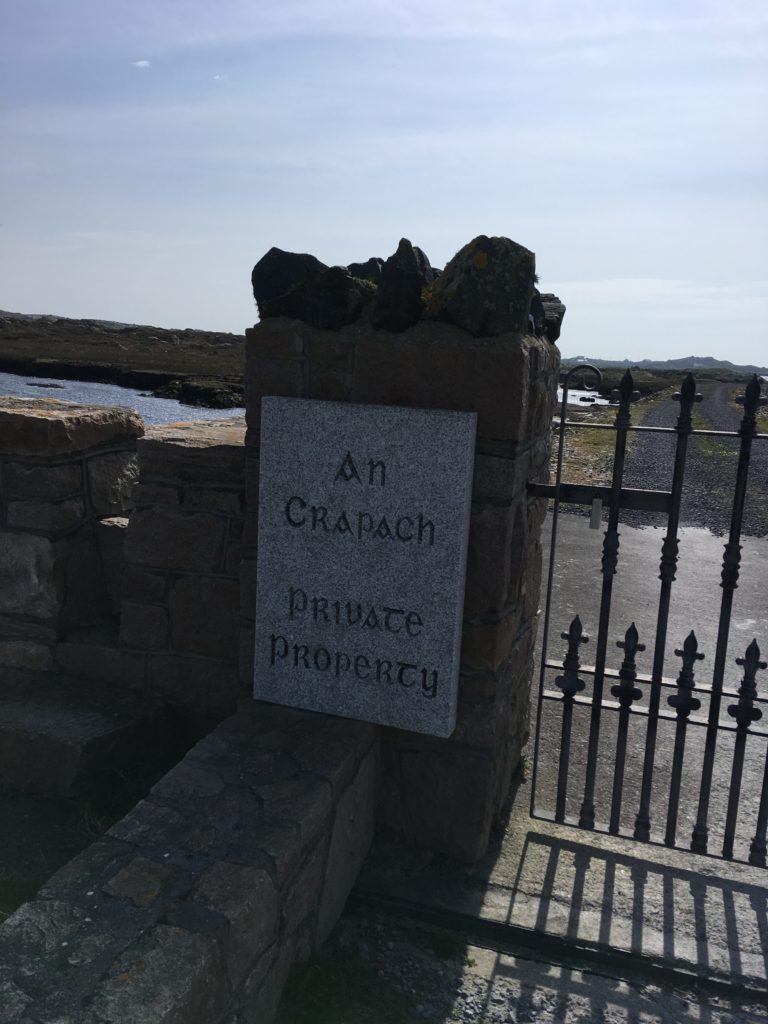
April 13, 2019 Bealadangan, Connemara
.
Strong winds and the feeling of having spent too many hours in a car lead us to decide upon a day of rest. We will probably never get the chance to see Connemara again, but we would need to drive to see it. We were therefore rather glad when strong winds brought on heavy rain, justifying our decision.
After working on our website and blog, Marc went out for a run and I went for a walk to a graveyard by the sea. Connemara is so full of stones! The fields are full of them, there are brick walls everywhere. Apparently these walls were all built by labourers at the request of the landowners and they were paid a pittance. I tried to imagine what it must have been like to be cold and tired and spend days piling up stones, with a hungry family waiting in a hovel.
It was raining so hard that we had to take Lady P even to get to Hookers Pub on the other side of the bridge. We had a lovely Guinness there, but unfortunately they did not serve any other food than frozen pizza and there was no music, it being such a grim night. We sat in the bar with the locals, they were talking in Gaelic. The barman/owner came to chat with us, as the Irish do, and told us he had been to Geneva with a group, he was the singer. Although he would not give us a song, our chat with him brought light to a gloomy evening. Fortified by Guinness we continued our search for food, no restaurants were open and we ended up buying more lamb at a petrol station and eating at home with left over neeps. We decided there was no place like home. Home? How quickly a B&B can feel like home when it is dark and cold and wet outside.
.
14th April, 2019 Bealadangan to Sligo
.
We had a great day considering the cold and often rain not to mention that wind! The morning drive along the shores of Lough Mask was really lovely. We had not been planning to go that way but there was a marathon on and the road via Leenaun was closed. It was definitely to our advantage. What a wild and wonderful and remote place Connemara can be when there are not many humans.
Knowing it was going to rain we planned a visit to Westport House in Westport as it was reputed to have an interesting interior and we definitely wanted to be inside! It was a great visit, they had a short audio guide and we were both mesmerised by the history of the Browne family, the Marquess of Sligo, their role in abolishing the slave trade, their reaction to the potato famine and their family fortunes. The 11th Marquess had five daughters and he had to change the law so that they could inherit the house. He was obviously hoping for a son and I hope he learnt something from the experience! The house passed into the ownership of the Hughes family in 2017, apparently a local family too. The house has lots of original features and although rather dilapidated in some respects, really conjures up how it must have been to live there in the 18th and 19th and 20th centuries.
Sligo was very windy and cold. We went out immediately on arriving at The Glass House as we had not had lunch. We had half of Guinness and a packet of crisps in Foley’s and I felt ready for anything after that. What a lovely pub, so old, with a welcoming landlady and two tv screens one showing golf – the Masters – and the other Liverpool and Chelsea football! I could have stayed there for the rest of my life but my husband dragged me out into the cold air for something to eat and we ended up having a very delicious seafood and fish platter with red cabbage and sweet potato purée in Coach Lane/Donaghy’s, with white wine and desserts to follow. I like Sligo, maybe because it is quite small and has a river flowing through so is easy to find your way around. Our orange room in the Glass House is lovely too.
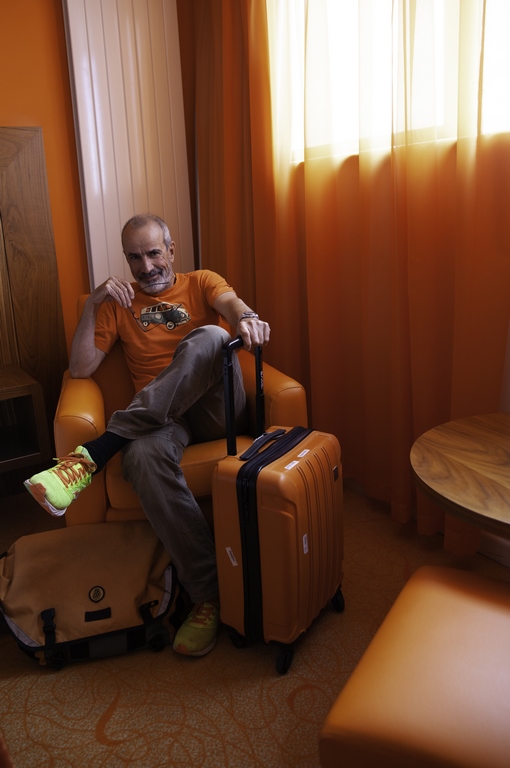
15th April, 2019 Sligo to Derry
.
We arrived in Derry via Lough Erne and Castlederg, with on short stop at a stone circle just before Castlederg. We contemplated the stones in a circle for five minutes before the icy wind drove us back to the welcome insides of Lady P!
Arriving in Derry early afternoon at our really lovely old B&B, Saddler’s House, near the Bogside, we were welcomed by Peter. We ate a scroogy picnic in our room (finally the last of the Dingle Salami and fruit cake) and set off to visit Derry. We began with the Free Derry Museum on Bloody Sunday. It was a modern museum set up very like the Red Cross Museum in Geneva with videos and quotes on the walls and large photographs. From there we walked into the walled town of Derry and, after a brief pause on the ramparts, the cold drove us into the Tower Museum. The museum provided a very thorough overview of the history of Derry since the stone age. We came out knowing a lot more than we went in. History is not smooth and logical however much museums try to make sense of it all.
We found a great pub, Peadar O’Donnell’s for a half of Guinness.
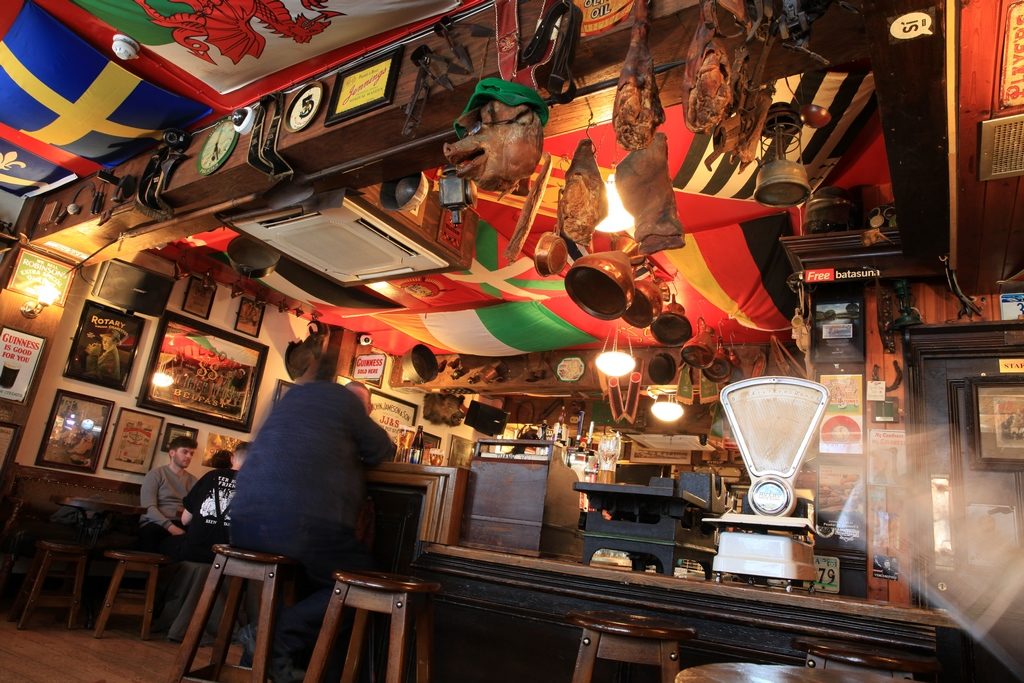
16th April, 2019 Derry to Ballycastle
.
Peter and Joan Pyne’s bed and breakfast, Saddler’s House, is in a row of Georgian houses just outside the city walls and near the Bogside. I learnt from our visit to the Tower Museum that these houses were lived in by wealthy Protestants, however Peter and Joan are from Dublin, he came here as a history teacher and they set up their B&B business when their three daughters left home. They have bought other properties in the same area, I expect they were very cheap to buy during the ‘Troubles’. Saddler’s House is really lovely, very tastefully decorated in the Georgian style with painted walls in mustard or olive or the currently fashionable ‘ficelle’. The sage green curtains are beautiful, obviously bought by someone with an eye for colours and textures. The breakfast table with its patterned tablecloth in a subtle blue and a real embroidered white nap in the centre, with butter dish and butter knife, was a feast for the eyes. Joan said they have a lot of French visitors, we found them in the ‘Guide de Routard’, they are on any booking website. They have a wonderful dog, a very solid and low to the ground bulldog, he was very affectionate. The walls of the lounge are covered with a mixture of family photos and paintings. Joan was very upset about the burning of the Cathedral of Notre Dame which had happened during the night, and we saw a painting of it on one of the walls. We had a lovely chat with them about politics and life in general. They were only bettered by the local butcher when we went shopping later. He asked where we came from, we were soon into a deep discussion on politicians and religion.
We took the coastal road to Giant’s Causeway, stopping at Downhill to take a photo of Lady Pamela on the beach. She is much admired wherever we go, we saw quite a few people taking photos of her in Derry. Peter and Joan said they did not mind us leaving, but would we leave the car.
Giant’s Causeway was busy, not I expect as it gets in the summer but too busy for us. We decided to return the next day and went on to Dunseverick where we had the coldest picnic yet.
We had reserved a house on the North Road of Ballycastle, overlooking the harbour. The coast of Scotland is only 47 km away and Islay only a few km more. The house is roomy with big bay windows. It belongs to a Dutch vet, called Martsje and is an Airbnb find. There is no internet so it was very cheap!
The small town of Ballycastle has a sea-side feel, but is a little bit dilapidated. We hoped for music in the evening when we saw a man head into a pub with his guitar. We went in later, only to hear that his amp did not hook up and so there would be no music. If we were disappointed the small wedding party who came in at the same time as us, with the bride wearing an anorak over her wedding dress, must have been even more so.
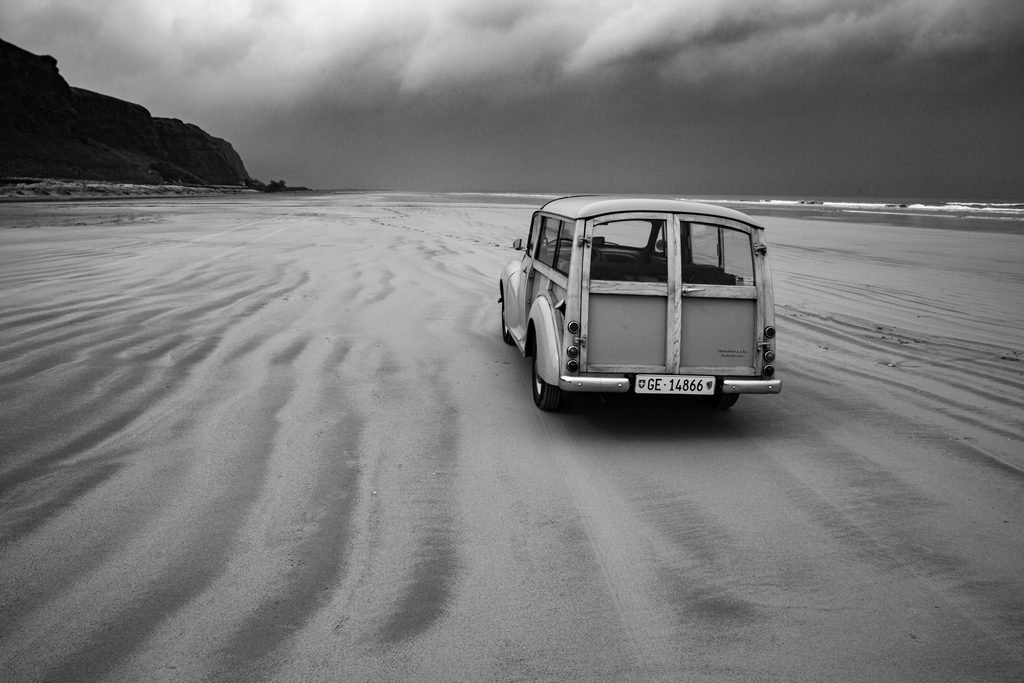
17th April 2019 Bally Castle (Rathlin Island)
.
In order to have Giants Causeway to ourselves we were at the site at 8.00 am. We walked down to the sea from the carpark following the road and path, serenaded by wrens and robins. A reed warbler flew across our path, a wheatear was on the rocks.
What had I been expecting? Something more dramatic and larger, I think. All was there as promised: the hexagonal stones reaching up high and dropping down to the sea. Only a couple of other people were there and we could wander at our will. I stood on the edge and saw gannets, oyster catcher and one eider duck. Gazing out to sea over the stones, I felt a little of the magic of the place, but the fuss around it, with special coaches taking people there and a big National Trust visitors’ centre, is too much. If you go, go in the morning before the coaches arrive.
We had read about a famous road near Ballymoney called The Dark Hedges, consisting of a row of beech trees planted by a Stuart as an alleyway to his house and now over 150 years old. The road was used in the filming of Game of Thrones. It took us a long time to find it. On arriving we ate breakfast in the carpark of the Dark Hedges Hotel, and a woman at the information desk showed Marc the woodland walk we could take to the Hedges. The actual road through them has been closed for two years so we had to leave Lady Pamela in the car park which was rather disappointing as we had come here for her. The Dark Hedges are quite impressive old trees in a row, but as with Giants Causeway they don’t merit the fuss made of them – as we left two coachloads of tourists were taking the woodland path.
I had heard that Rathlin Island had the biggest bird colony in Northern Ireland so why were we not there? We remedied that by heading straight back to Ballycastle and taking the next ferry for the island. The day which had begun grey and cold was beginning to clear and now a ever more powerful sun was turning the grey sea blue. It just got better. Arriving on the island we took the puffin bus to the RSPB centre and walked down to the cliffs. From the lighthouse there we were able to look down upon thousands upon thousands of guillemots, razorbills, kittiwakes and fulmars and about 20 puffins. Later an artic skua flew by. Ravens and gannets were out at sea. Helpful RSBP staff chatted to the small group gathered there. We stayed a long time, absorbed in the scene as the sun shone.
Later we walked back to the harbour with stonechat, wheatear, robin, and drank a Guinness waiting for our boat home.
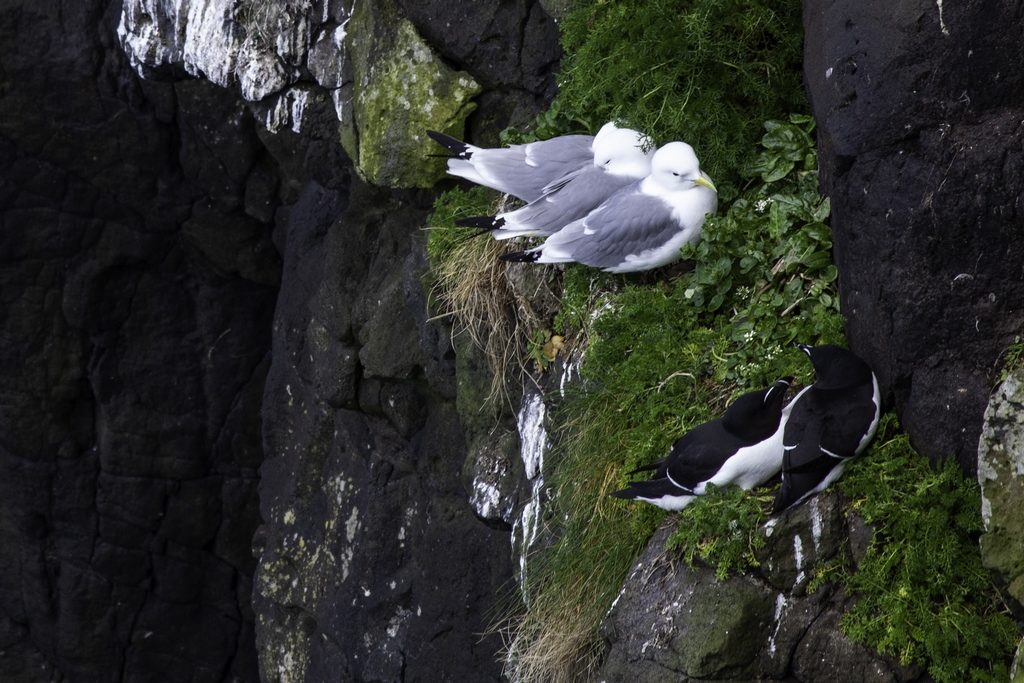
18th April, 2019 Ballycastle to nr Straid
.
Lady Pamela draws attention to herself whereever we go. Many are those who smile and wave, or call out: ‘nice car, how old is it?’ In Ballycastle a man and his daughter were sitting outside a cafe in the sun waiting for the ferry to Rathlin. Seeing Lady Pamela the man gave us the whole history of the Morris Minor he used to own, how many miles he had done and what a profit he had made on it. We had left Ballycastle earlier but were back there as after starting the coastal road to Carrickfergus Marc discovered that he had forgotten his rain coat. Never mind, it allowed us to hear the story this man had to tell and also to meet the owner of our Airbnb, Marjise, who was just about to get in her car after cleaning the house and picking up the coat! She was a lovely young woman and she thanked us for leaving out our recycling, she would give the bread to her hens. She said that the Irish were not yet really into recycling, to which I could only agree.
What an up and down drive is the coastal road around Torr Head! Lady Pamela groaned up in 2nd gear. Sometime I feel it would be quicker and safer to walk! The cliffs, the sea and wild moorland are beautiful, so not surprising that this is also a Game of Thrones location but thankfully less accessible to big coaches than the Dark Hedges. We had a picnic on a windy sea front at Waterfoot and later stopped for a short while at the Marina in Carrickfergus. There is such a lovely song about Carrickfergus that I was sure it must be a nice place, but it wasn’t so we headed off to our B&B some miles out of Straid. We drove down a rough track to Beech Land Farmhouse, where the owners, Jane and Graham, were just putting their sheep and lambs into a field. They have six sheep and five had already given birth. The sixth one was in a pen looking large and rather sheepish! Marc said she was obviously a last choice for the ram and knew it! It took a while for Jane and Graham (carrying the lambs) to get the first sheep to understand that she would be better off in the field. She was unsure what move would be the best, as sheep often are, and quite rightly so considering how they end up! It was lovely to watch the lambs as they went outside for the first time in their lives. We have seen lots of lambs during our trip and never get tired of watching them jumping around full of the joys of spring!
Jane was a very chatty person and over a cup of tea and scone we learnt all about her family who were expected later for a get together! We asked her where we could go for a walk, she said there were no footpaths and advised us to walk along the road, turning to the left. As we had come from the left we chose to turn right and soon found a track up past an abandoned chicken farm with piles of eggs and boxes all covered in dirt and dust. Probably why Jane had suggested going left! We continued on up the track, surrounded by cows and sheep. A car passed us and we waved at the farmer. Later he drove by again and stopped by us, not saying anything at first. I ventured a hesitant ‘hello’ and he asked what we were doing and he hoped we were not ‘from one of those organisations who make trouble’ I assured him that we were not and that we were just out for a walk. He then kindly directed us to a road leading to his farm through which we could reach the wind turbines on top of the hill. We followed his directions and had a lovely walk passing many sheep and lambs and two horses high on the hill behind the wind turbine.
Later we went to a hotel/restaurant by the main road that had been recommended by Graham (‘f you try the mixed grill you won’t be able to finish it’). It was a typical roadside pub hotel serving popular but rather industrial food in large quantities and specialising in grilled meat and chips with toffee and chocolate desserts. I actually really enjoyed my chicken maryland, it has been so long! Our neighbours at the next table were a man and his rather plump wife and two children, and after the meal the man, attracted to us as he had seen we had driven in with a Morris Traveller, told us all about his trips to France. How interesting and pleasant people are when you get talking.
